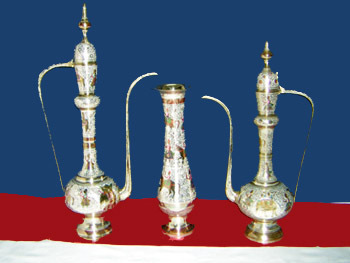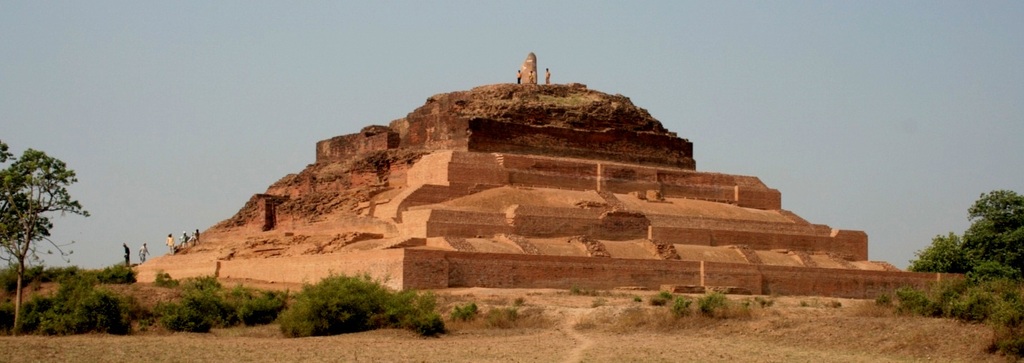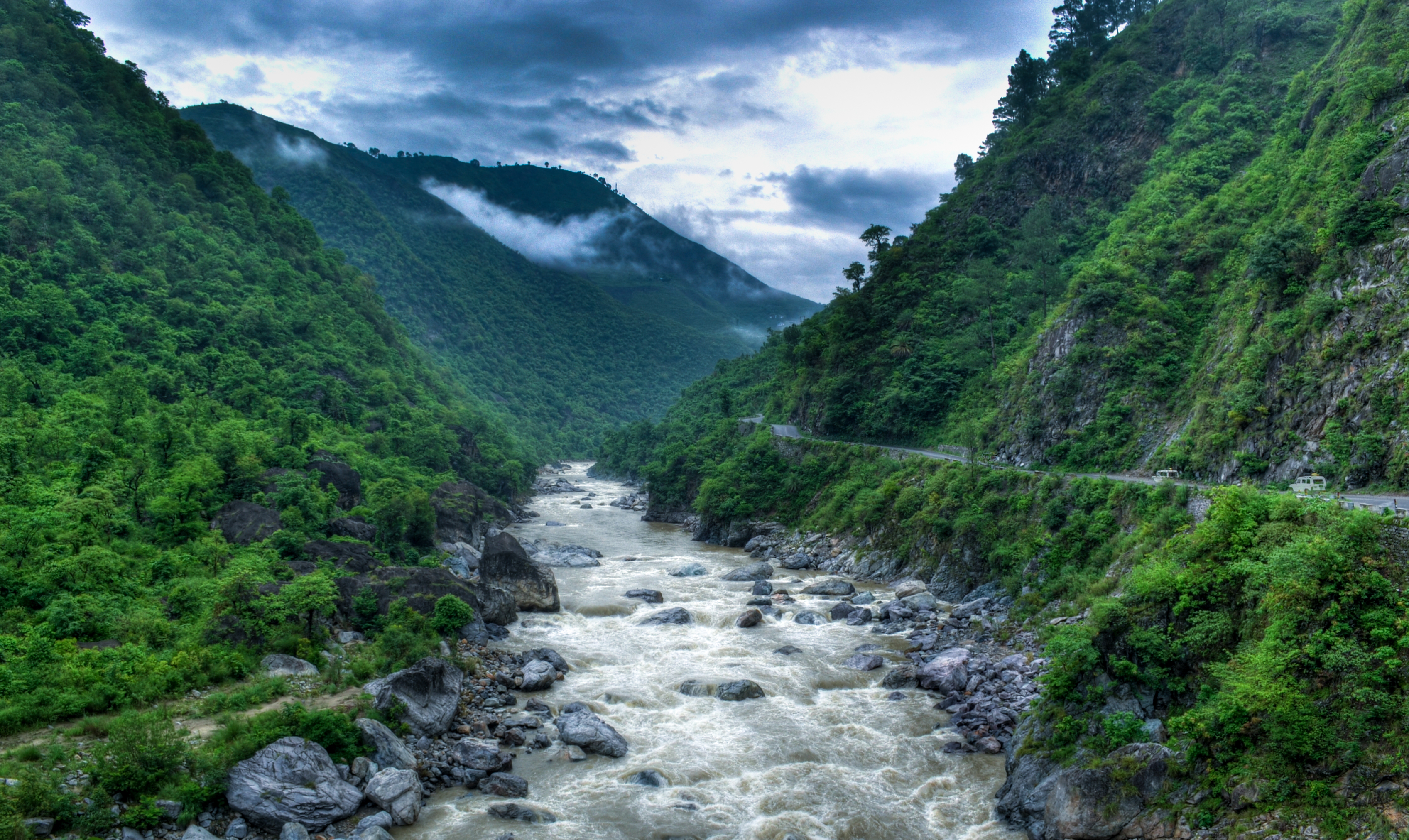|
Udham Singh Nagar District
Udham Singh Nagar District (officially District of Udham Singh Nagar )is a district of Uttarakhand state in northern India. Rudrapur is the district headquarters. This district consists of nine Tehsils named Bajpur, Gadarpur, Rudrapur, Jaspur, Kashipur, Kichha, Khatima, Sitarganj, Nanakmatta. The district is located in the Terai region, and is part of Kumaon Division. It is bounded on the north by Nainital District, on the northeast by Champawat District, on the east by Nepal, and on the south and west by Bareilly, Rampur, Moradabad, Pilibhit and Bijnor District of Uttar Pradesh state. The district was created on 29 September 1995, by Mayawati government out of Nainital District. It is named for freedom fighter and Indian revolutionary Udham Singh. As of 2011, it is the third most populous district of Uttarakhand (out of 13), after Haridwar and Dehradun. Tehsils in Udham Singh Nagar district # Kashipur # Jaspur # Bajpur # Gadarpur # Rudrapur # Kichha # Sitarganj # Nanak ... [...More Info...] [...Related Items...] OR: [Wikipedia] [Google] [Baidu] |
List Of Districts Of Uttarakhand
A district of Uttarakhand state is an administrative geographical unit, headed by a District Magistrate (earlier called District Collector), an officer belonging to the Indian Administrative Service. The district magistrates are assisted by a number of officers (such as deputy collector, assistant collector, additional district magistrate, sub-divisional magistrate, tehsildar, naib tehsildar belonging to the Uttarakhand Civil Service and other Uttarakhand state services. A Superintendent of Police, an officer belonging to the Indian Police Service, heads the police in the district and is entrusted with the responsibility of maintaining law and order and related issues. He is assisted by the officers of the Uttarakhand Police Service. A Deputy Conservator of Forests, an officer belonging to the Indian Forest Service, is responsible for managing the Forests, environment and wild-life related issues of the district. He is assisted by the officers of the Uttarakhand Forest Serv ... [...More Info...] [...Related Items...] OR: [Wikipedia] [Google] [Baidu] |
Gadarpur
Gadarpur is a post independence city and a municipal board in Udham Singh Nagar district in the state of Uttarakhand, India. This city was formed with the arrival of the refugees from Pakistan at the time of partition of 1947. The refugees settled here and started living here. The refugees are Punjabi which makes up a majority in the city. Demographics India census, Gadarpur had a population of 19,301. Males constitute 52% of the population and females 48%. Gadarpur has an average literacy rate of 64%, higher than the national average of 59.5%: male literacy is 69%, and female literacy is 59%. In Gadarpur, 16% of the population is under 6 years of age and its literacy rate is 100%. History During the partition of 1947 the Terai forest was cut down for settlement of the refugees during the time of Partition of India. This place developed into a township by time. Accessibility The nearest Airport is 24 km away at Pantnagar. Gadarpur is connected by road with all the ma ... [...More Info...] [...Related Items...] OR: [Wikipedia] [Google] [Baidu] |
Moradabad
Moradabad () is a city, commissionary and municipal corporation in Moradabad district of Indian state of Uttar Pradesh. Moradabad is situated on the banks of the Ramganga river, at a distance of from the national capital, New Delhi and 344 km north-west of the state capital Lucknow. Founded by Rustam Khan, the governor of Katehar under the Mughal emperor Shahjahan, Moradabad is named after prince Murad Bakhsh, the youngest son of the emperor. Soon after its establishment, the city replaced Sambhal as the seat of the governor of Katehar. Moradabad was subsequently annexed into the Kingdom of Rohilkhand by Ali Mohammed Khan in 1740. The city came under the control of Oudh State in 1774 after the fall of Rohillas in the First Rohilla War and was then ceded to the British East India Company by the Nawab of Oudh in 1801. In the early nineteenth century, the Rohilkhand area was divided among the Rampur State and two districts - Bareilly and Moradabad; Moradabad becam ... [...More Info...] [...Related Items...] OR: [Wikipedia] [Google] [Baidu] |
Rampur District
Rampur district is one of the districts of Uttar Pradesh state of India, and Rampur town is the district headquarters. Rampur district is a part of Moradabad division. The district occupies an area of . Demographics According to the 2011 Census of India, Rampur district has a population of 2,335,819, roughly equal to the nation of Latvia or the US state of New Mexico. This gives it a ranking of 194th in India (out of a total of 640). The district has a population density of . Its population growth rate over the decade 2001-2011 was 21.4%. Rampur has a sex ratio of 905 females for every 1000 males, and a literacy rate of 75.08%. Scheduled Castes make up 13.18% of the population. Islam is the majority religion in the district. Three out of five tehsils in Rampur have a Muslim majority and one a Muslim plurality. Hindus are majority in rural areas, while Muslims predominate in urban areas. Sikhs are a significant minority in Bilaspur and Suar tehsils. At the time of the 2 ... [...More Info...] [...Related Items...] OR: [Wikipedia] [Google] [Baidu] |
Bareilly
Bareilly () is a city in Bareilly district in the Indian state of Uttar Pradesh. It is among the largest metropolises in Western Uttar Pradesh and is the centre of the Bareilly division as well as the historical region of Rohilkhand. The city lies in the Indo-Gangetic Plains, about north west of the state capital, Lucknow, and east of the national capital, New Delhi. With a population of 898,167 in 2011, it is the eighth most populous city in the state, seventeenth in northern India and fifty-fourth in India. It is located on the bank of Ramganga River and is the site of the Ramganga Barrage built for canal irrigation. The earliest settlement in what is now Bareilly was established in 1537 by Jagat Singh Katehriya who named it 'Bans-Bareli' after his two sons Bansaldev and Bareldev. The town came under the rule of Mughals in 1569 and had become the capital of a local pargana by 1596. The foundation of the modern city of Bareilly was laid by Mughal governor Mukrand Rai in ... [...More Info...] [...Related Items...] OR: [Wikipedia] [Google] [Baidu] |
Nepal
Nepal (; ne, नेपाल ), formerly the Federal Democratic Republic of Nepal ( ne, सङ्घीय लोकतान्त्रिक गणतन्त्र नेपाल ), is a landlocked country in South Asia. It is mainly situated in the Himalayas, but also includes parts of the Indo-Gangetic Plain, bordering the Tibet Autonomous Region of China to the north, and India in the south, east, and west, while it is narrowly separated from Bangladesh by the Siliguri Corridor, and from Bhutan by the Indian state of Sikkim. Nepal has a diverse geography, including fertile plains, subalpine forested hills, and eight of the world's ten tallest mountains, including Mount Everest, the highest point on Earth. Nepal is a multi-ethnic, multi-lingual, multi-religious and multi-cultural state, with Nepali as the official language. Kathmandu is the nation's capital and the largest city. The name "Nepal" is first recorded in texts from the Vedic period of the India ... [...More Info...] [...Related Items...] OR: [Wikipedia] [Google] [Baidu] |
Champawat District
Champawat district is a district of Uttarakhand state in northern India. The town of Champawat is the administrative headquarters. The district of Champawat constituted in the year 1997. The district is divided into five tehsils: Barakot, Lohaghat, Pati, Purnagiri, and Champawat. There is 2 Sub Tehsil: Pulla and Munch. The largest and the main city of the district is Tanakpur. Champawat district is part of the eastern Kumaon division of Uttarakhand. It is bounded on the north by Pithoragarh district, on the east by Nepal, on the south by Udham Singh Nagar district, on the west by Nainital district, and on the northwest by Almora district. it is the second least populous of the 13 districts of Uttarakhand, after Rudraprayag. Economy In 2006 the Ministry of Panchayati Raj named Champawat one of the country's 250 most backward districts (out of a total of 640 districts). It is one of the three districts in Uttarakhand currently receiving funds from the Backward Regions Grant F ... [...More Info...] [...Related Items...] OR: [Wikipedia] [Google] [Baidu] |
Nainital District
Nainital district is a district in Kumaon division which is a part of Uttarakhand state in India. The headquarters is at Nainital. Nainital District is located in Kumaon Division, and is located in the lower Himalayas. Haldwani is the largest city in the district. Geography The district borders Almora and Champawat districts to the north, Udham Singh Nagar district to the south, and Bijnor district of Uttar Pradesh and Pauri Garhwal district to the west. Nainital district is located in the Kumaon Himalaya. The district has part of the Bhabar tract in its south, which is bordered to the north by the Sivalik hills. To the north of this is the Lesser Himalayas, with a maximum altitude of 2600m. The main river in the district is the Kosi, which forms part of the border between Almora and Nainital districts before entering Nainital district proper. It then flows through Nainital district to the Ramganga. History The southern Terai part of the district was ruled by the Panchal ... [...More Info...] [...Related Items...] OR: [Wikipedia] [Google] [Baidu] |
Kumaon Division
Kumaon (; Kumaoni: ''Kumāū''; ; historically romanized as KemāonJames Prinsep (Editor)John McClelland ) is a revenue and administrative division in the Indian State of Uttarakhand. It spans over the eastern half of the state and is bounded on the north by Tibet, on the east by Nepal, on the south by the state of Uttar Pradesh, and on the west by Garhwal. Kumaon comprises six districts of the state: Almora, Bageshwar, Champawat, Nainital, Pithoragarh and Udham Singh Nagar. Historically known as Manaskhand and then Kurmanchal, the Kumaon region has been ruled by several Hindu dynasties over the course of history; most notably the Katyuris and the Chands. The Kumaon division was established in 1816, when the British reclaimed this region from the Gorkhas, who had annexed the erstwhile Kingdom of Kumaon in 1790. It was formed into a division of what was then called Ceded and Conquered Provinces, later known as United Provinces. In independent India the state was called Utt ... [...More Info...] [...Related Items...] OR: [Wikipedia] [Google] [Baidu] |
Terai
The Terai or Tarai is a lowland region in northern India and southern Nepal that lies south of the outer foothills of the Himalayas, the Sivalik Hills, and north of the Indo-Gangetic Plain. This lowland belt is characterised by tall grasslands, scrub savannah, Shorea robusta, sal forests and clay rich swamps. In North India, the Terai spreads from the Yamuna River eastward across Haryana, Uttarakhand, Uttar Pradesh, Bihar and West Bengal. The Terai is part of the Terai-Duar savanna and grasslands ecoregion. The corresponding lowland region in West Bengal, Bangladesh, Bhutan and Assam in the Brahmaputra River basin is called 'Dooars'. In Nepal, the term is applied to the part of the country situated north of the Indo-Gangetic Plain. Nepal's Terai stretches over , about 23.1% of Nepal's land area, and lies at an elevation of between . The region comprises more than 50 wetlands. North of the Terai rises the Bhabar, a narrow but continuous belt of forest about wide. Etymology The Urdu ... [...More Info...] [...Related Items...] OR: [Wikipedia] [Google] [Baidu] |
Nanakmatta
Nanakmatta is a historical town named after the Sikh pilgrimage site, Gurdwara Nanak Mata Sahib, in the state of Uttarakhand in India. Sikh tradition records that the site was once called Gorakhmata, a centre of Siddh-jogis named after the founder of their order, Gorakhnath, at the distance of 30 miles from Reetha sahib. In the Siddh-Gost in Guru Granth Sahib, the story of Guru Nanak on his first ''udasi'' is told, wherein he had a long discourse with siddhas on matters of religion and metaphysics. Tradition says that the place was renamed Nanakmatta to perpetuate the memory of Guru's visit. The town is associated with Guru Nanak Dev and Guru Hargobind. It is situated on the bank of Deoha stream, which has since been dammed into a reservoir named Nanak Sagar. The Gurudwara is located 15 kilometres west of Khatima Railway Station on road to Tanakpur. The holy shrine is near the town of Sitarganj. It is one of three Sikh Holy places in the state, with others being Gurdwara Hemk ... [...More Info...] [...Related Items...] OR: [Wikipedia] [Google] [Baidu] |
Sitarganj
Sitarganj is a city and a municipal board in Udham Singh Nagar district in the Indian state of Uttarakhand. Now it is home to the Integrated Industrial Estate Sitarganj (IIE) being developed by State Industrial Development Corporation of Uttarakhand Limited (SIDCUL). Geography Sitarganj is located at . It has an average elevation of 298 metres (978 feet). The city is located between three major water reservoirs naming:- Baigul Fish Reservoir, Dhora Reservoir and Nanak Sagar Reservoir which are used mainly for fisheries. Baigul or Sukhi is a small tributary originating from the foothills of Kumaon Himalayas which was harnessed in 1967 for irrigation and flood control purpose. Baigul has an area of 2695 ha with an elevation of 211 m from the sea-level. The drainage area of 305 km2 is fed from southwest monsoon and local catchment of wooded forest. The Plankton species in Baigul is rich comprising 17 genera of green algae, 4 genera of blue-green algae, 10 genera of d ... [...More Info...] [...Related Items...] OR: [Wikipedia] [Google] [Baidu] |




